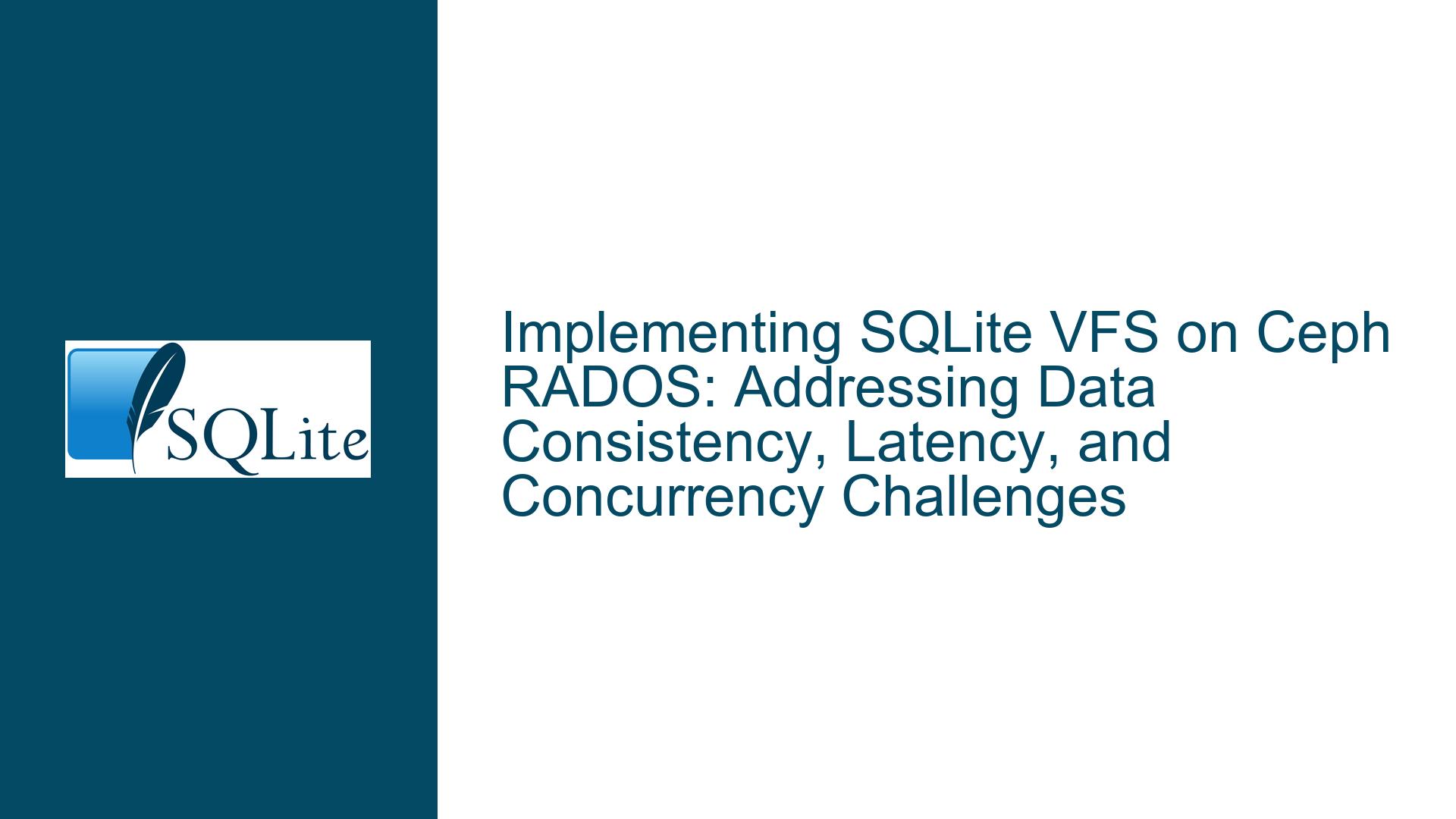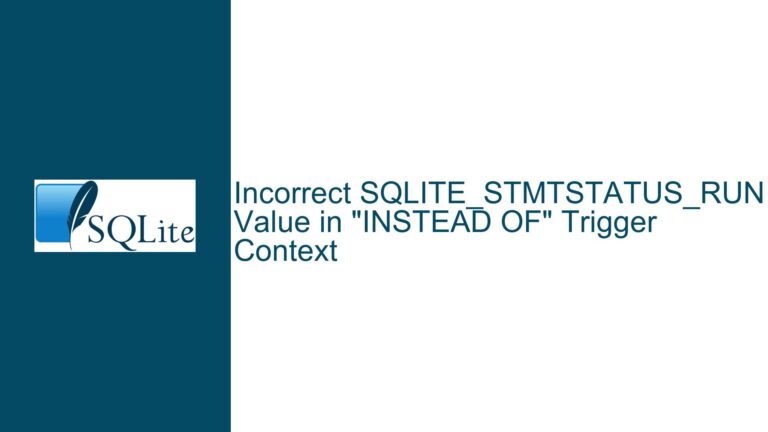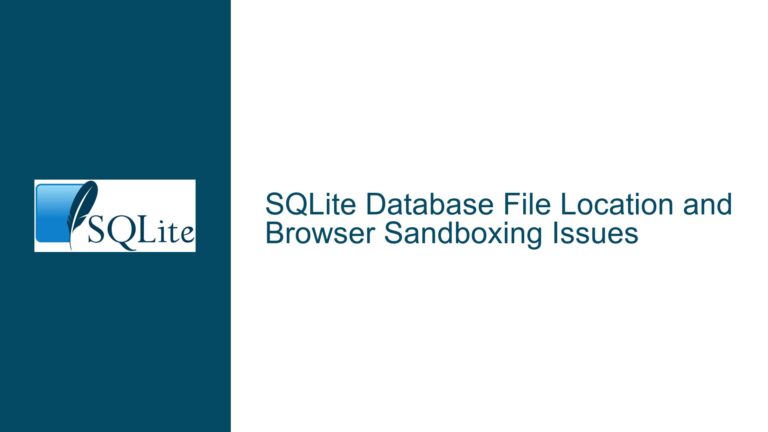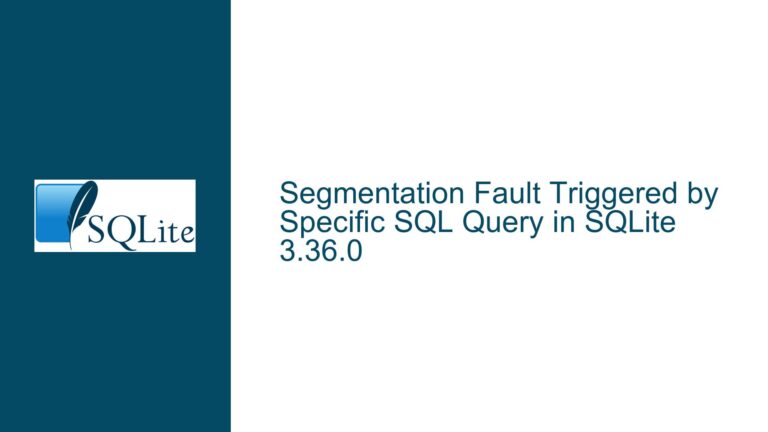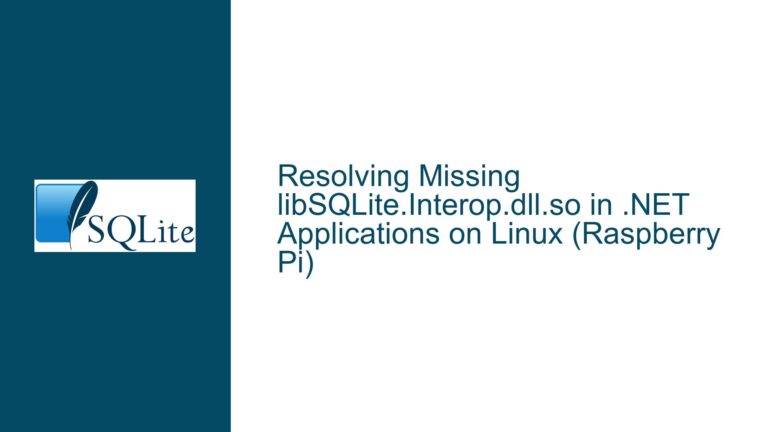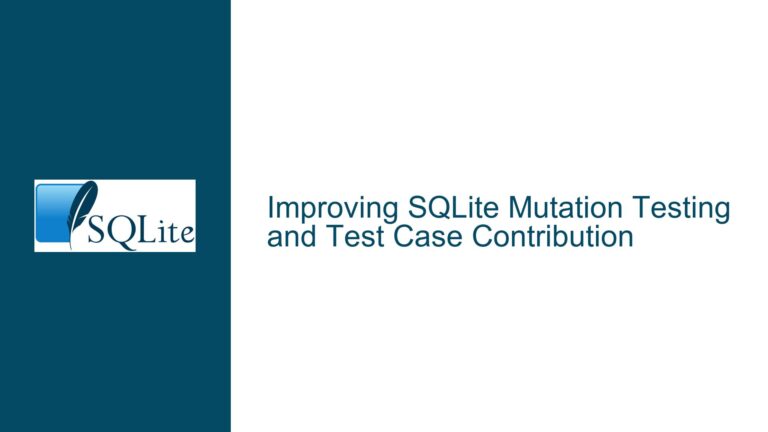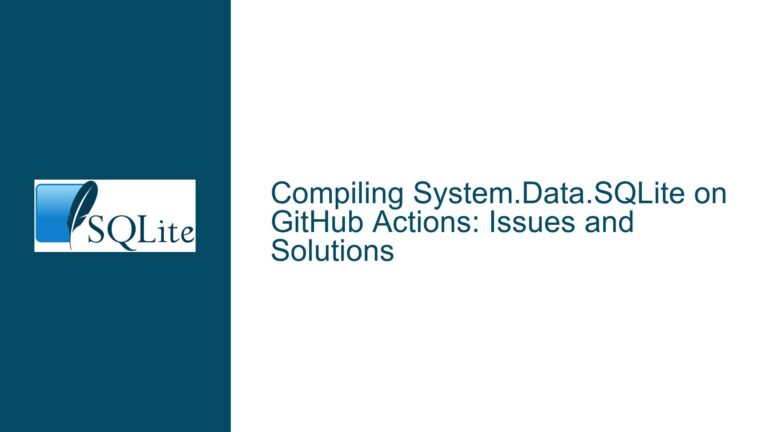Implementing SQLite VFS on Ceph RADOS: Addressing Data Consistency, Latency, and Concurrency Challenges
Integration Challenges Between SQLite’s Virtual File System and Ceph RADOS
The integration of SQLite’s Virtual File System (VFS) with Ceph’s Reliable Autonomic Distributed Object Store (RADOS) introduces a complex set of challenges rooted in the architectural differences between a lightweight embedded database and a distributed storage system. SQLite’s VFS is designed to abstract file operations for local storage, relying on POSIX-like semantics for reads, writes, locks, and synchronization. Ceph RADOS, however, operates in a distributed environment where data is sharded across nodes, consistency is eventual by default, and operations are optimized for scalability rather than low-latency transactional guarantees. This mismatch creates friction in three primary areas: data consistency, I/O latency, and concurrency control.
When SQLite issues a write operation through its VFS, it expects atomicity and durability guarantees that are trivial to enforce on local disks but non-trivial in a distributed system like Ceph. For example, SQLite’s write-ahead log (WAL) mechanism assumes that fsync() operations will persist data reliably, but in Ceph, fsync semantics must be emulated across multiple object storage devices (OSDs), which introduces network round-trips and coordination overhead. Similarly, SQLite’s file-locking mechanisms (e.g., flock() or dot-file locks) are incompatible with Ceph’s distributed locking strategies, leading to race conditions when multiple clients attempt to modify the same database concurrently. These issues are compounded by Ceph’s object-based storage model, which treats files as collections of objects rather than contiguous byte streams, complicating page-aligned I/O operations critical for SQLite’s performance.
Architectural Mismatches and Distributed Systems Complexity
The root causes of these challenges stem from fundamental disparities between SQLite’s design assumptions and Ceph RADOS’s operational model. First, SQLite’s VFS layer assumes a local file system with strict POSIX compliance, whereas Ceph RADOS provides an object storage API that lacks native support for file-level locking or byte-range atomicity. This forces the VFS implementation to emulate POSIX semantics on top of RADOS, which is inherently lossy and prone to edge cases. Second, Ceph’s eventual consistency model conflicts with SQLite’s ACID guarantees, particularly for transactions spanning multiple objects. For instance, when a transaction commits, SQLite expects all modified pages to be durably written, but Ceph may replicate these pages asynchronously across OSDs, creating windows where partial writes are visible. Third, network latency and partition tolerance introduce unpredictable delays in operations like journal synchronization or lock acquisition, which SQLite interprets as I/O errors or timeouts, leading to transaction rollbacks or database corruption.
Another critical factor is the lack of transactional awareness in Ceph’s object storage layer. SQLite’s WAL requires that all changes to the database and WAL files are coordinated atomically, but Ceph RADOS does not provide cross-object transactions. This means that updating the WAL and the main database file cannot be done as a single atomic operation, risking split-brain scenarios during crashes. Additionally, Ceph’s CRUSH algorithm for data placement optimizes for load balancing and fault tolerance rather than locality, increasing the likelihood of read/write amplification for SQLite’s contiguous access patterns. Finally, the VFS shim layer itself may introduce bugs due to incomplete or incorrect emulation of SQLite’s expected behaviors, such as handling file truncation, sparse files, or mmap operations.
Resolving Consistency, Optimizing Latency, and Ensuring Concurrency
To address these challenges, developers must adopt a multi-pronged approach that bridges the gap between SQLite’s expectations and Ceph’s capabilities. First, implement a strong consistency mode in Ceph for SQLite’s critical operations. This involves configuring Ceph pools with size=3 and min_size=2 to ensure writes are acknowledged by multiple OSDs, combined with using LIBRADOS_OPERATION_FULL_TRY to enforce synchronous replication for WAL commits. For locking, replace SQLite’s default file locks with a distributed lock manager (DLM) like Ceph’s cls_lock RADOS class, which provides atomic mutual exclusion across clients. This requires modifying the VFS’s xLock and xUnlock methods to interact with the DLM via librados.
Second, optimize I/O latency by leveraging RADOS namespaces to colocate SQLite’s WAL and database files on the same OSDs, reducing network hops. Use predictive read-ahead in the VFS layer to prefetch database pages during query planning, and batch small writes into larger RADOS operations to amortize overhead. For mmap support, which SQLite uses extensively, implement a cache tier in the VFS that buffers frequently accessed objects in local memory, invalidating entries via Ceph’s watch/notify机制 when updates occur.
Third, enhance concurrency by adopting MVCC (Multi-Version Concurrency Control) at the VFS layer. Instead of relying solely on locks, version metadata can be stored in RADOS object attributes, allowing readers to access consistent snapshots without blocking writers. For crash recovery, extend SQLite’s checkpointing mechanism to reconcile the WAL with RADOS objects using a two-phase commit protocol, ensuring that partial writes are rolled back during VFS initialization. Finally, instrument the VFS with detailed metrics—such as RADOS operation latency, lock contention rates, and cache hit ratios—to identify bottlenecks and validate improvements under load.
This guide provides a foundation for resolving the most pressing issues when integrating SQLite with Ceph RADOS. Each solution requires careful testing under failure scenarios (e.g., OSD outages, network partitions) to ensure the VFS behaves predictably and aligns with SQLite’s durability guarantees. Future work could explore tighter integration with Ceph’s BlueStore backend or leveraging RDMA for low-latency I/O.
